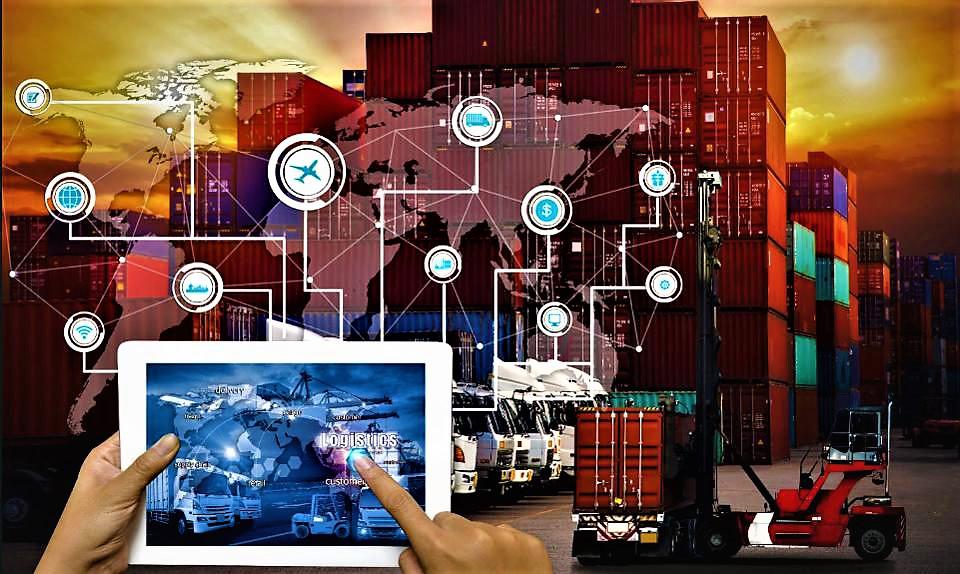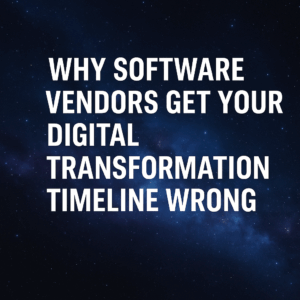As we think about our supply chains in 2022, it’s time to reconsider strategies and approaches in order to optimize for the future. The supply chain is the spine of businesses. It’s critical to ensure it doesn’t break, because if it does – the entire organization will be impacted.
That said, what are the top 10 trends to be aware of and consider regarding supply chain strategies for 2022? Here are the top trends you need to know.
As we enter 2022, we must be thinking about how our supply chains have worked in the past and be thinking about how we’re going to adjust those supply chain to work better in the future.
First, it all starts with rethinking our strategic objectives. In the past, prior to the Covid-19 pandemic, most supply chains were focused on cost-optimization and throughput. Business leaders faced many questions like:
- How can we get the lowest cost provider?
- How can we get as much through the supply chain as quickly as possible?
We weren’t thinking about things like flexibility or what if there’s a pandemic that hits the world, or what if customer demand shifts dramatically overnight? These considerations were not top of mind until early 2020.
As we enter 2022, we have two years of experience with this post-pandemic world, specifically in dealing with broken supply chains. Now more than ever, it’s time to rethink the strategies and focus on how we can improve supply chains going forward.
Table of Contents
Toggle1. Optimize Human Capital Management
Labor shortages throughout the world are one of the key challenges that supply chains are facing. It’s something that’s limiting the reliability and flexibility of supply chains. It’s creating a lot of disruption and undermining our customer experience while making our lives difficult in the meantime. One of the best ways that we can address this labor shortage is via human capital management and rethinking management strategies.
- How can we better attract and retain talent in light of the fact that it’s currently so hard to source good talent and prevent high turnover?
- How can we ensure that we develop those resources to become better at supporting our supply chain?
- How can we ensure that we keep those resources as part of our team and as one of our employees for the longer term?
Now, keep in mind this can’t all be fixed with technology, but HR technologies such as human capital management systems can help automate the hire-to-retire processes and provide actionable data regarding employee retention.
With top-notch recruiting, development, learning, and high-quality training processes along with the functions that support the overall employee experience, the most successful supply chains are going to have a mature human capital management process..

2. Customer and Supplier Visibility
Given the unpredictable demand and the impacts that suppliers have, it’s more important than ever that we have visibility into the overall supply chain. We must understand the full journey from the customer demand through the procurement of raw materials, semi-finished goods, or components that go into our finished goods. Heighten clarity around manufacturing and warehouse processes, logistics, shipping, and 3PLs is not only a best practice but will also illuminate any optimization opportunities.
Many organizations weren’t prepared for the unpredictability of our current business climate, so supply chains were not as resilient as they needed to be. They didn’t have the technologies and the processes to support unexpected peaks and valleys within the supply chain.
It’s not just immediate suppliers and customers to consider, depending on your business, you may need to think about second and third tier suppliers. Questions to ask yourself when dealing with customer and supplier visibility:
- What is their reliability?
- What is their quality?
- What is their availability?
- What is their lead time?
The further we can go down and into the supply chain, the more effective we’re going to be at planning our supply chain. It is the same with our customers. If our customers have customers they’re selling to, it’s even better if we can anticipate the end customer demand, even if we’re not selling directly to them. That’s another way to extend visibility via our processes, technologies, and data to ensure that we’re looking at the entire supply chain.
You also have 3PLs or logistic providers, you also might have ports that you’re relying on or shipping providers. You want to make sure you have knowledge of reliability, costs, predictability, and all those things that are important to effective supply chains.

3. Diversify the Supplier Base
When the pandemic first hit in early 2020, and all the lockdowns ensued after that, a lot of supply chains learned very quickly the hard way that they had concentrated their risk with a small number of suppliers. Many businesses relied on one key supplier, for one key component, or key raw material for their supply chain. There were also issues where maybe one of the main suppliers was in a country that was in competitive lockdown which affected the distribution of the products. Organizations ultimately discovered the hard way that if they didn’t have a variety of suppliers and diversified risk, they could not sustain a supply chain bottleneck.
Businesses need to really think about how they diversify their supplier base going forward. It is important that you ensure that you have a plan B, a plan C, and your backup vendors in case one vendor can’t meet your needs. This may reduce purchasing power with anyone given supplier, but that might be a worthy tradeoff in gaining flexibility, dependency, and reliability within your supply chain.
The diversity of your supplier base is critical, not just in procuring raw materials and components, but also in the types of 3PL providers you might rely on.
4. Simplify Products and Raw Materials
Another SCM key finding in the post-pandemic world is that many organizations have overly complex, over-engineered products, and raw materials. It may be that the products themselves don’t provide a streamlined supply chain. If you have a product that requires thousands of different raw materials, you may want to look into ways that you can simplify from a product development perspective.
Consider this restructuring from a supplier perspective to ensure that you’re not dependent on too many different suppliers. Oftentimes when you have a high volume of raw materials, there are more opportunities for breaks in your supply chain. If we can centralize and shorten the supply chain, that can oftentimes mitigate unnecessary risk.
5. Increase Cost Transparency
Supply chains in general struggle to have clear visibility into their cost structure even before the disruption of the pandemic. Certainly, now in the 2020s, that’s becoming even more difficult because of inflation. Supplier breakdowns and bottlenecks within the supply chain create several challenges that make it difficult to understand the true cost structure.
To overcome this, a solid understanding outline of the cost structure is necessary. Organizations need to be able to break it down, at a unit level, how costs equate to a total landing cost for any given product. That’s going to help battle inflation and maybe even win the war. This information will allow businesses to keep margins steady in the current environment of inflation and other price fluctuations.
That cost transparency is something that’s very critical, and it may be that having healthier systems and technologies is one way to do that.

6. Increase Cash Liquidity
As organizations have extended lead times, and a diversified supplier base, it’s caused more cash to be consumed and tied up within the supply chain. Today, in order to have an effective supply chain organizations need to have enough cash liquidity to ensure that they can finance these peaks and valleys scenarios.
This is maybe more of a band-aid fix or more of a reaction than a true strategy. But organizations that are stronger financially have access to credit or a line of credit they can draw from. This extra cash is going to mitigate the challenges that come from having new suppliers that have more stringent payment terms.
That extension of the overall duration and delivery is creating more cash constraints that the more financially sound organizations are going to be able to successfully navigate.
7. Revise Pricing Strategies
Now, the last two strategies and trends I’ve talked about are related to financial consideration, related to cost, and cash liquidity. On top of that, a third of financial consideration is your overall pricing strategy. Once you understand all-in landed cost and per-unit cost to conclude full supply chain cost, you will have a roadmap.
This prework allows organizations to revisit pricing models and ensure that the right price structure is in place to account for considerations like inflationary pressures, currency fluctuations, and other things that are going to affect the supply chain.
8. Redefine Your Digital Strategy
The first seven strategies can all be enabled by technologies – visibility into the information, improved tracking of your supply chain, and just overall business intelligence. Moreover, organizations need to redefine digital strategies of pre-2020 as these are no longer relevant today. Digital strategies must be right-sized for the 2020s and the future of supply chain management.
A good first step is reviewing software applications that can automate your supply chain or provide some of that visibility via data. Assets like robotic process automation or robotics in general, smart sensors on factory floors, functions that will help provide more real-time information. You want to take a holistic view of your entire digital strategy invigorated by actionable data.

9. Look Beyond the Supply Chain
Now that we have analyzed everything from raw material suppliers all the way through our customers, it’s time to look outside the supply chain. Organizations must create more effective processes, technologies. data, and even organizational structure to support the supply chain and provide that flexibility for the future.
End customers, second and third tier suppliers, suppliers that may not be immediate to the business but affect immediate suppliers. Reaching beyond the core supply chain and optimizing each piece of operational strategies will provide the fuel to sustain and overcome any disruption.
10. Prepare for Government Regulations
Whether we like it or not, or want it to happen or not, chances are high that there will be some sort of government regulations as it relates to the supply chain. At this time, the United States government is exploring the idea of imposing regulations and taking a more active role in managing global supply chains in hopes to clean up the mess.
It doesn’t matter what your political beliefs are or whether you think this is a good idea or not, the reality is, it’s likely to happen. It has never been more critical to create a supply chain structure that provides the flexibility to be able to adapt if or when those government regulations come into play.
One important thing about government regulations is that they oftentimes aren’t realistic. They’re painful, they don’t often offer time to plan and prepare for the influence these policies will have on business communities. If you can start forecasting and training for potential regulations now, that’s going to make any future changes much smoother.
Worst case scenario, if the government regulations never happen and supply chains somehow get back to normal, at the very least you’ve injected flexibility into your supply chain. These new strategies can now effectively respond to other third-party and unpredictable aspects of supply chain management without disruption or lost revenue.
Key Takeaways and Resources
These are just 10 of the most important trends that we have observed for successfully managing supply chains in the 2020s. I encourage you to consider a variety of digital transformation opportunities to automate or improve your supply chain.
To help you with that assessment and with that journey, I highly suggest you download our 2021 Digital Transformation Report. This resource can help you understand best practices around supply chain and digital transformations. Please also reach out to me directly if you have any questions surrounding the supply chain crisis. I am happy to be an informal sounding board as you move through your digital transformation journey.






